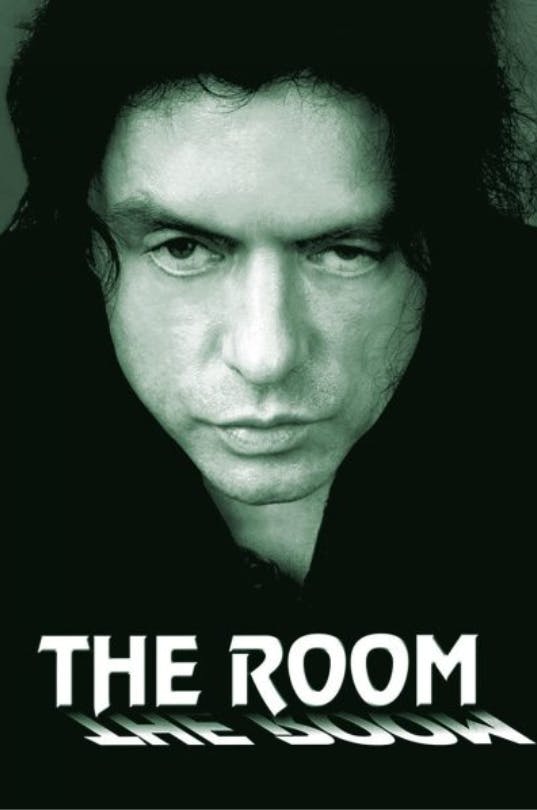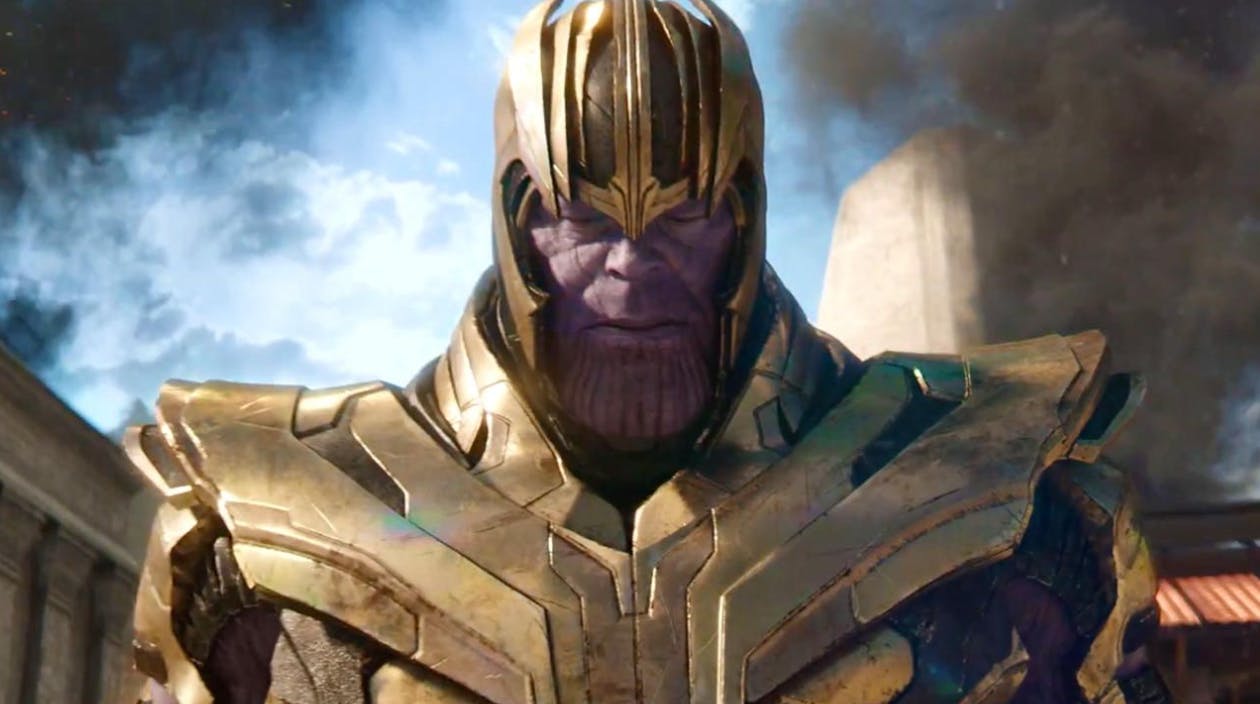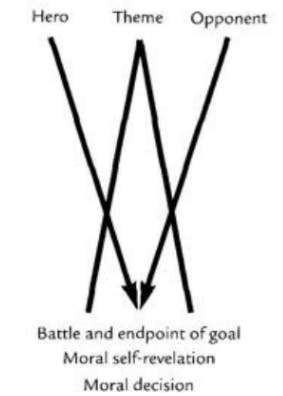The Theme, Values, and Moral Debate of Your Story- How to Apply Storytelling to Your Project, Part 2
In the previous article Premise and Designing Principle, we learned how to create a premise, what a designing principle is, and how to use a designing principle — if you've not read it yet, I suggest you read it before this one since this is the continuation.
As said in my previous article, "the desire to write a story can often come from wanting to use a specific detail, a detail that you cherish for a personal reason." It can be an object, a color, a dialogue, a character's name, or anything.
But more often, the willingness to write a story comes from the willingness to send a message. That is why every story you've heard or film you've seen is full of sense and has a message.
- Key point: even if you don't want to write a story to deliver a message in the first place, you have to find the one(s) you will deliver through your story. Otherwise, you risk delivering a message that you don't want to share.
You can think that this particular movie or this specific story doesn't make sense and has no message, but I'm 100% sure you're wrong.
Generally, the kind of movie or story that you can think of at this moment is just badly told by someone who had a deep desire to tell something but didn't have the key to do it correctly.
 The Room, directed by Tommy Wiseau (2003)
The Room, directed by Tommy Wiseau (2003)
It is really hard for artists to feel misunderstood. We've seen this with Tommy Wiseau, who directed The Room. This movie is full of sense for Tommy, but because he didn't know any rules of cinema in 2003, the film he made wasn't understandable to his audience, and his film ended up being one of the worst films ever made.
I'm here to help you tell your story in the right way, send the message you want, and share the values that are important to you.
The theme line
First of all, you have to know the theme of your story and write your theme line.
Like the premise, your theme line summarizes your theme in one line. Also, it is linked to the designing principle.
For example, in Citizen Kane :
- Designing principle: use several people telling Kane's story to show that a man's life can never be known.
- Theme line: a man who tries to force everyone to love him ends up alone.
In this movie, we understand through each interview that all the people who met Kane have never really liked him. The theme transpires through the designing principle and you can easily get the message from the movie only with this information : True love can't be bought. True love is made of deep feelings.
Even though your designing principle will support the theme, the real place to develop it is in the moral debate.
The antagonist
Note: I will develop how to write characters in a future article of this series: The Characters of Your Project - How to Apply Storytelling to Your Project, Part 4
The antagonist plays one of the most important roles regarding the theme of your story. It will be through the fight between him and the main character that you will develop the theme.
This fight is not physical but moral. That is the moral debate.
The moral debate is the debate occurring between your main character and its antagonist about their vision of how life should be lived. The moral debate is strongly linked to the theme of your story.
- Key point: the antagonist is not necessarily a bad guy.
To create this debate, the antagonist and the main character have to share the same goal. Otherwise, their roads will never cross.
So, it's because they share the same goal and have different values that their road will cross and they will get into conflict.
Therefore, the one who wins will determine the message sent by your story.
For example, in the Avengers movies, Thanos has the same goal as the Avengers: to save the people living in the galaxy. However, their vision to do this differs. Thanos wants to kill half of the living, while the Avengers are trying to save everybody.
 Thanos in Avengers: Infinity War (Russo Brothers, 2018)
Thanos in Avengers: Infinity War (Russo Brothers, 2018)
He has a fair goal, but poor values and actions. That is why he loses.
The message sent by the movie is that we can't save everybody (Thanos has to pay a lot and doesn't succeed), so the best is to help those we can, like the Avengers. The Avengers have never saved the entire galaxy and will keep defending it, but at least they do their best where they can.
We can sum up the message — or the moral — of this movie as "Do your best in your field of action."
- Key point: the values you will share through the moral debate have to be important for you.
However, don't fall into the trap to create an evil villain without any good values. Even if you want to explain it through a sad backstory or whatever, a villain without any good values is not interesting, and your moral debate will more be about the good and the bad, than about specific values.
And nobody wants to hear a story about how good we have to be, and how bad is it to be bad.
In the Avengers, Thanos and the Avengers are not fighting for the good or the bad, they're fighting about how to save others, and therefore how to live a life as someone wanting to save others.
Even if this debate is close to the simple "good vs bad," it brings nuances and makes Thanos' character deeper than the simple villain who is purely evil. That is also why some of the most interesting characters in pop culture are often the antagonist.
Darth Vader, Joker, Hannibal Lecter..
- Key point: villains are not always the antagonist and can be much more interesting too! It is the case for Norman Bates from Psycho (Alfred Hitchcock, 1960) or even Keyser Söze from Usual Suspects (Bryan Singer, 1995).
As you've understood, the most important thing is to make sure that the character with values important to you ends up winning. More often it will be the main character, but it is not mandatory, depending on what your message is.
For example, if your main character fights an entire system alone but doesn’t succeed, the message sent by your story is that you can't win alone against something too powerful. Which is understandable.
The most important thing is to send the message you want to send. So here is another key.
Structure
Note: I will develop the structure theme in the next article of this series: The Structure of The Story - How to Apply Storytelling to Your Project, Part 3
The structure of your story helps you create mysteries and deliver your message in the right way.
No one wants to see a moral debate occurring in a dialogue between your main character and his antagonist. And even less in the first act of your story.
That is why your main character and his antagonist often won't meet too early in your story. They could, but if they do, they cannot confront each other. Otherwise, everything that will happen after this moment, and before the last confrontation will probably not make any sense.
Imagine the structure like this :

Your main character and his antagonist are far away (in the debate, not necessarily physically) and with the plot (and so the theme of your story) going on, they're becoming closer and closer, until they have to face each other.
At this point, your main character and his antagonist are at the closest, that is where they'll fight for their values, and also the moment during which the moral debate is the clearest.
Between the beginning and the end, you have to create interactions between these two most important characters. If you don't, it will seem weird to see them fight at the end. But as you can imagine, you have to wait before making these interactions too frontal, because if you don't, the final fight will not seem as important as it has to.
That is why the structure of your story is really important.
Now that you know this..
Let's choose the theme of our story
Note: in each article of the series, there will be this part where I will create lore for an imaginary project. Any resemblance with an existing project is coincidental.
The Odyssey is a fictive NFT project that will use the designing principle of the 12 Labors of Hercules to tell the story of Kyou, someone who found out that Medusa the Gorgon from Greek Mythology seems to want to destroy web3. But does she..?
One thing is sure: Kyou will learn more about all of that by going through Medusa's challenges. But he won't be able to face these challenges alone and he will need a strong community to help!
All of that being clear, the theme of this story will be "the discovery."
As a person, it seems important to me to be curious, interested, and adventurous. It leads to discovering the world, understanding what we don't, and enjoying a life full of surprises.
That is why the main character of my story, Kyou, will be an adventurer and lead the community he will build through a world that has to be discovered.
However, even if I've presented Medusa as an antagonist until now, they really aren’t. Medusa will play a role of an ally, disguised as an antagonist. But don't worry, we'll see how to write characters in one of the next articles of this series.
So, the real antagonist will defend values that are the opposites of Kyou's values such as passivity, laziness, and inactivity.
It doesn't mean that this character will have those attributes, but they'll be the ones he will defend.
Kyou's character and the message I will send through this story are pretty common compared to the well-known stories of our time — such as Shonen mangas like One Piece or Naruto — and that is my purpose.
Kyou will be made to inspire an entire community, and I will take my inspiration from Shonen manga to create him.
To conclude..
Now that you know the theme of your story and how to share the message and values you want to share, we'll look at how to use the power of the narrative structure in the next part : The Structure of the Story - How to Apply Storytelling to Your Project, Part. 3

